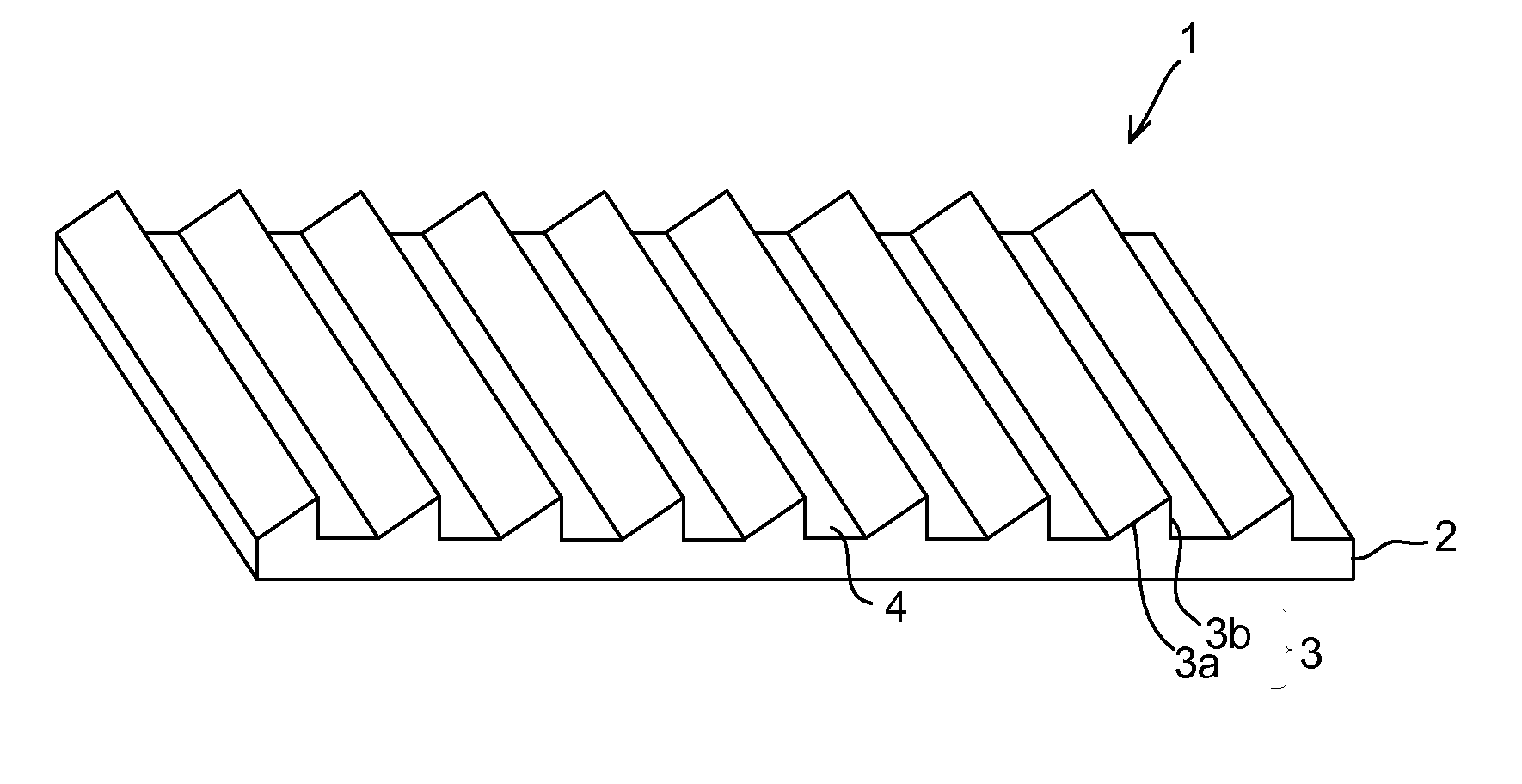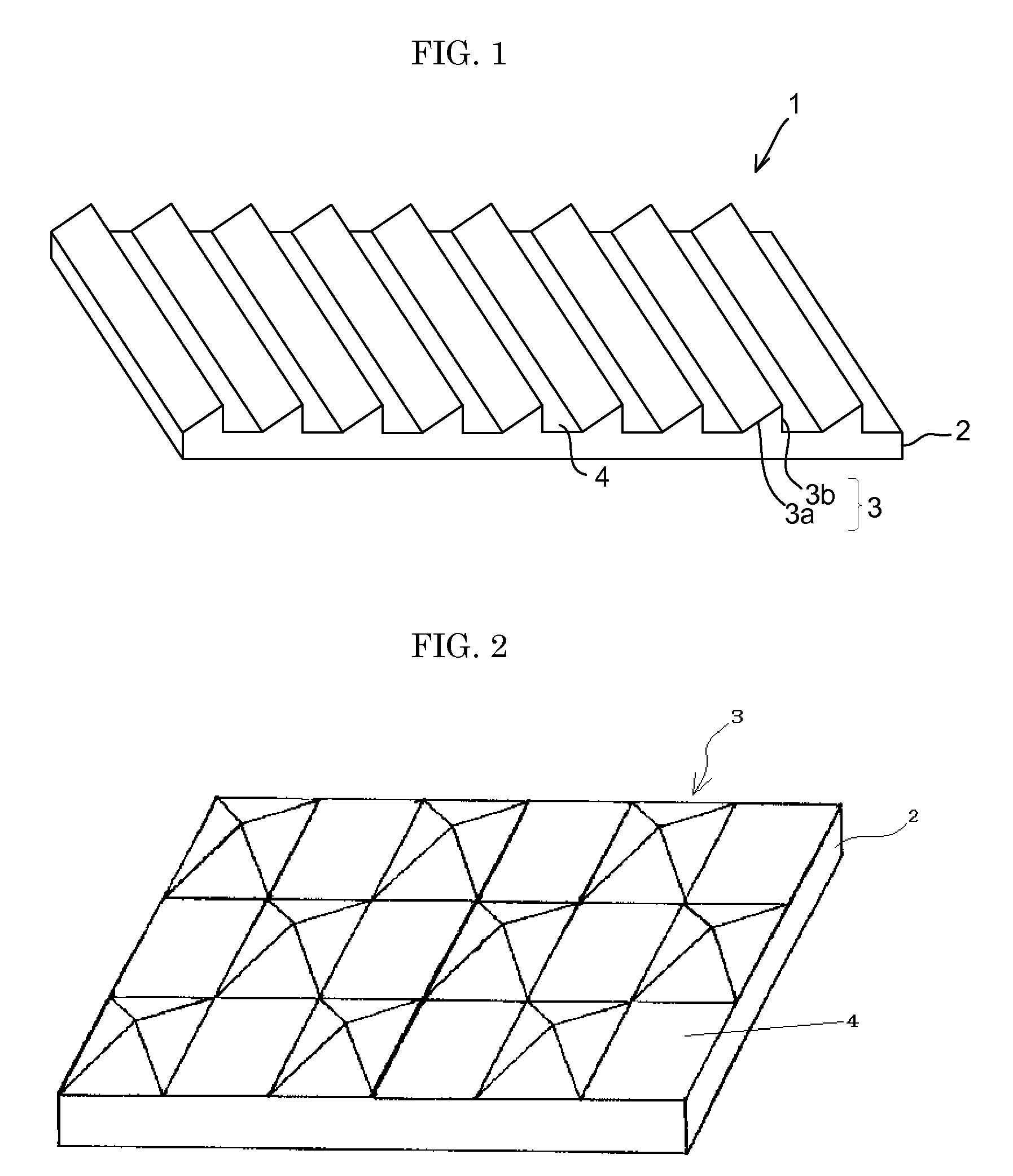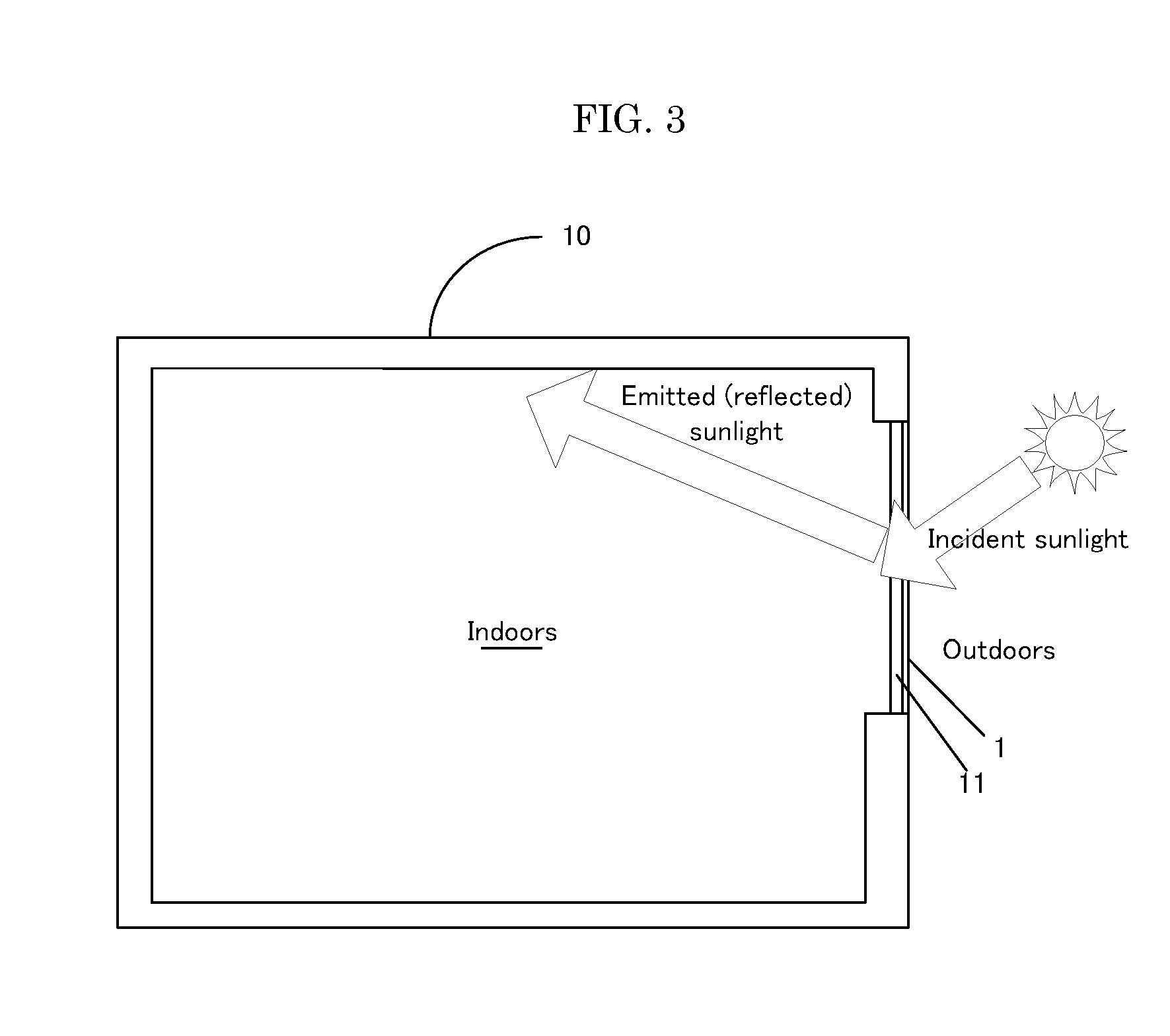Daylighting film and window equipped therewith
- Summary
- Abstract
- Description
- Claims
- Application Information
AI Technical Summary
Benefits of technology
Problems solved by technology
Method used
Image
Examples
example 1
Production of Daylighting Film
>
[0105]The following composition was mixed and melting-mixed at 50° C. to prepare a resin liquid. The content rate of methylethylketone (MEK) in the obtained resin liquid was 16.7% by mass. And the viscosity of the resin liquid was 90 mPa·s.
[0106]Composition of the Resin Liquid
[0107]EB 3700 (EBECRYL 3700, a bisphenol-A type epoxy acrylate manufactured by DAICEL-CYTEC Company LTD., viscosity: 2,200 mPa·s at 65° C.)—35.0 parts by mass
[0108]BPE200 (NK ESTER BPE-200, ethylene-oxide added bisphenol-A methacrylic acid ester manufactured by Shin-nakamura Chemical Co., Ltd., viscosity: 590 mPa·s at 25° C.)—35.0 parts by mass
[0109]BR-31 (NEW FRONTIER BR-31 (solid under room temperatures / melt at 50° C. or higher), a tribromophenoxy ethyl acrylate manufactured by Dai-Ichi Kogyo Seiyaku Co., Ltd.)—30.0 parts by mass
[0110]LR 8893X (LUCIRIN LR 8893X, bis(2,6-dimethoxybenzoyl)-2,4,4-trimethylpentyl phosphine oxide, a radical generator manufactured by BASF Chemical)—2....
example 2
Production and Evaluation of Daylighting Film
[0126]A daylighting film 1 was produced in the same manner as in Example 1 except that, as shown in FIG. 6, pitches P1 of upper / lower unit prisms 3 and plain areas 4 differed from pitches P2 of middle unit prisms and plain areas.
[0127]More specifically, the pitches P1 was 50 μm (the width N of the unit prisms 3 was 50 μm and the width M of the plain areas 4 was 0 μm) and pitches P2 was 70 μm (the width N of the unit prisms 3 was 50 μm and the width M of the plain areas 4 was 20 μm). The height H and elevation angles θ1 and θ2 of the unit prisms 3 were the same as those in Example 1.
[0128]In explanations of the daylighting film in the present invention, the term “upper” means a range from the top of the daylighting film 1 to 30 cm below the top. The term “lower” means a range from the bottom of the daylighting film 1 to 60 cm above the bottom. And the term “middle” means a range from 30 cm to 60 cm below the top of the daylighting film 1 (...
example 3
Production and Evaluation of Daylighting Film
[0130]A daylighting film 1 was produced in the same manner as in Example 1 except that, as shown in FIG. 7, unit prisms 3 were not formed at the middle of a support 2 of the daylighting film and only plain areas 4 were formed instead of the unit prisms.
[0131]More specifically, pitches and width N of upper unit prisms 3 were 50 μm and pitches and width N of lower unit prisms 3 were 50 μm. And only plain areas 4 were formed at the middle, or between the upper and lower unit prisms. The height H and elevation angles θ of the unit prisms 3 were the same as those in Example 1.
[0132]The thus obtained daylighting film 1 was placed on the window 11, and evaluated in the same manner as in Example 1. The obtained results are shown in Table 1.
PUM
 Login to View More
Login to View More Abstract
Description
Claims
Application Information
 Login to View More
Login to View More - R&D
- Intellectual Property
- Life Sciences
- Materials
- Tech Scout
- Unparalleled Data Quality
- Higher Quality Content
- 60% Fewer Hallucinations
Browse by: Latest US Patents, China's latest patents, Technical Efficacy Thesaurus, Application Domain, Technology Topic, Popular Technical Reports.
© 2025 PatSnap. All rights reserved.Legal|Privacy policy|Modern Slavery Act Transparency Statement|Sitemap|About US| Contact US: help@patsnap.com



